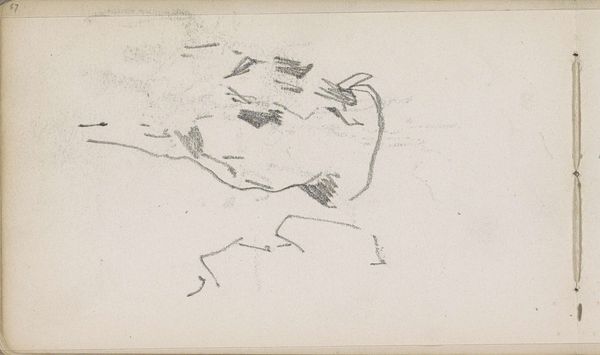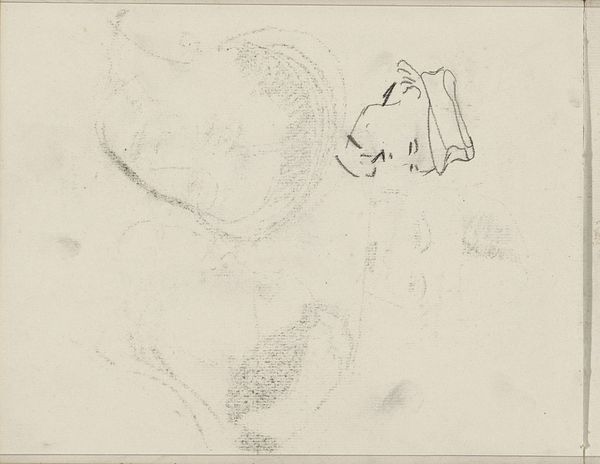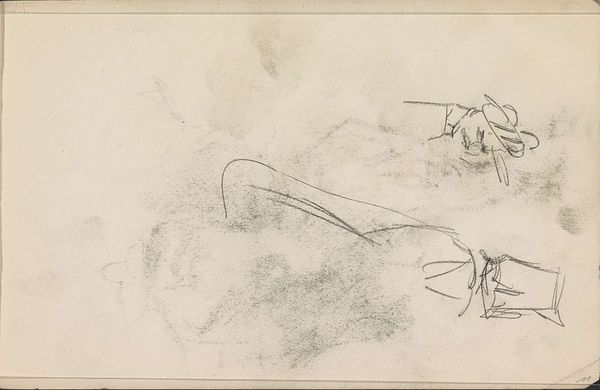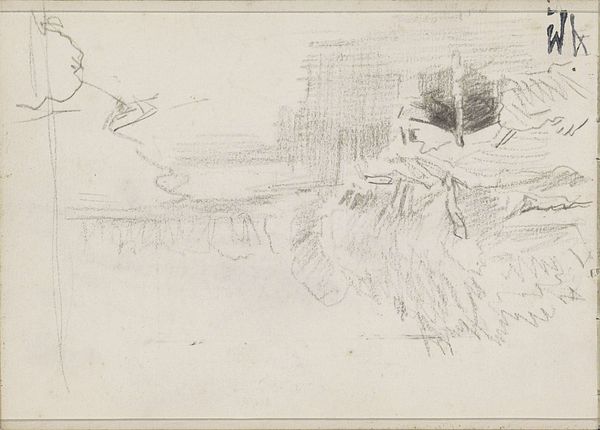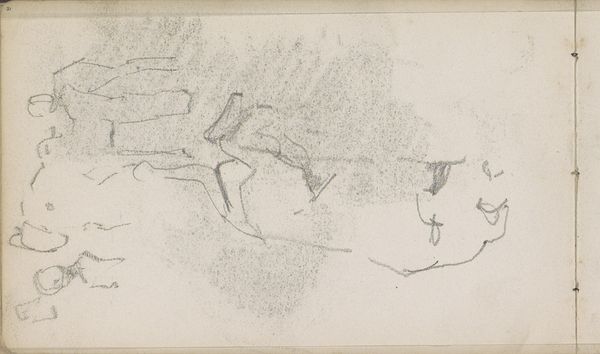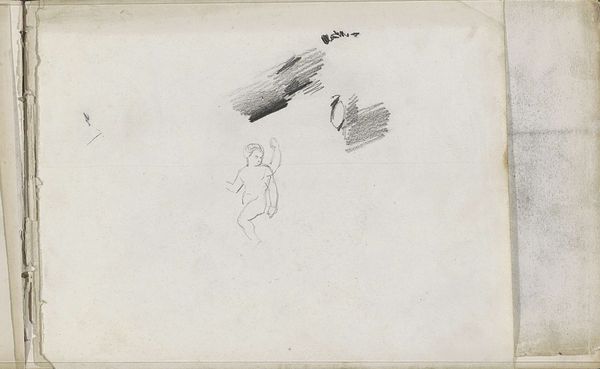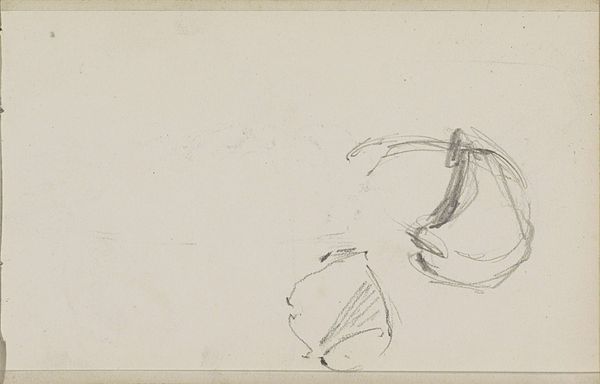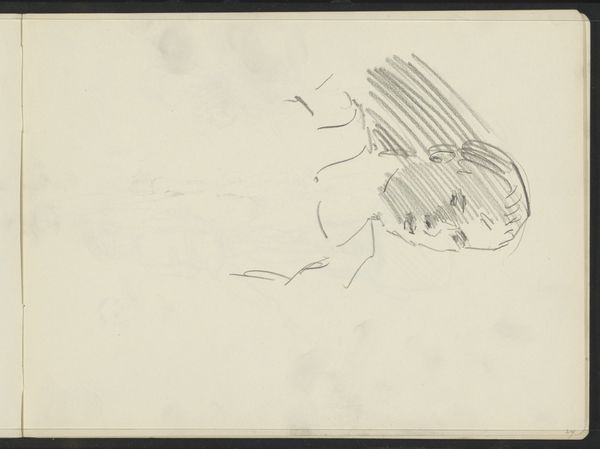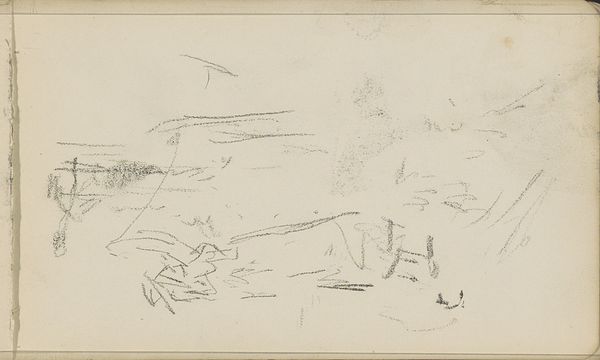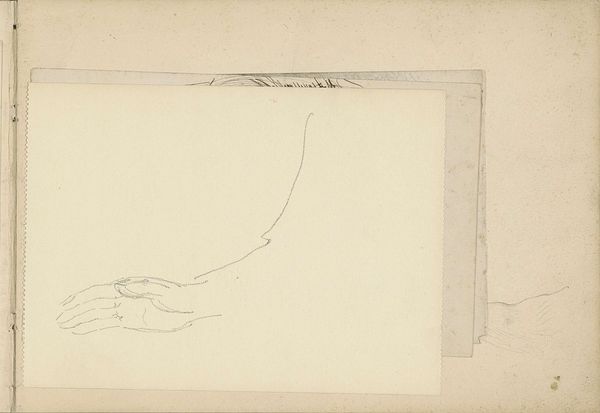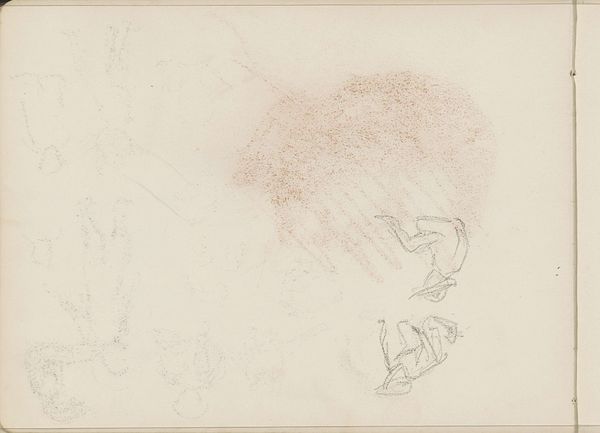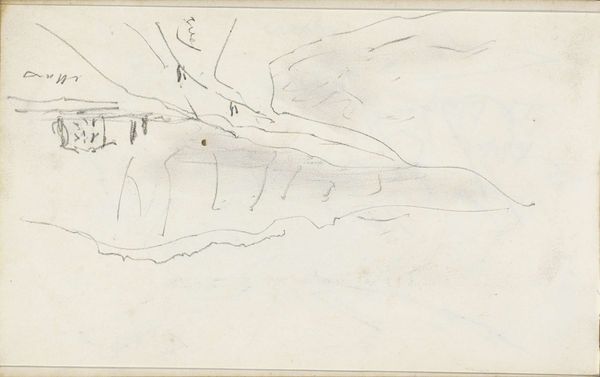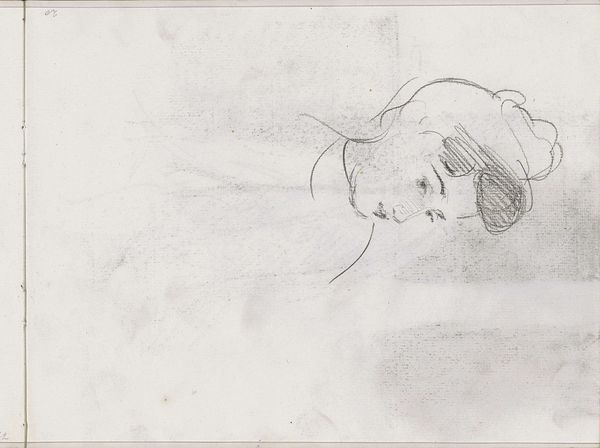
Copyright: Rijks Museum: Open Domain
Editor: Here we have Isaac Israels’ "Twee hoofden", a pencil drawing made sometime between 1875 and 1934, now at the Rijksmuseum. It’s incredibly sparse, almost like a fleeting thought captured on paper. What do you see in this piece, especially considering Israels’ broader career? Curator: Well, it strikes me as a glimpse into the artistic process itself, a very intimate look at the role of sketching in Impressionist practice. Israels, known for his lively depictions of modern life, particularly street scenes and figures, uses this drawing to study a particular social type or urban character, I imagine. It’s fascinating to see him distilling form and expression to their essence. Who do you think he might have been studying? Editor: Possibly models in a studio, or just people he encountered in the streets. Given the period, the late 19th century into the early 20th, could these figures represent particular social strata, even in such a rudimentary sketch? Curator: Absolutely! The rapidly shifting urban landscape of that time fueled an obsession with capturing fleeting moments and characterizing the new social types emerging within it. Consider how artists like Daumier used caricature to critique society. Israels may have been doing something similar, subtly encoding class distinctions or social commentary through gesture and posture, even in this early stage. How does the sketch's unfinished quality contribute to this, in your view? Editor: It’s as if he's inviting us to fill in the blanks, to project our own interpretations onto these figures and, perhaps, to reflect on the societal structures that defined their lives. It feels really…contemporary, even now. Curator: I agree. It highlights how art can function as a kind of social mirror, reflecting back the concerns and anxieties of a particular moment. The politics of imagery is deeply rooted in these very acts of seeing and representing. Thinking about Israels’ sketches makes me consider all of the initial impressions, biases and stereotypes reflected in portraiture as a social practice. Editor: This definitely gives me a new way of considering portraiture as not just a representation of an individual, but an interaction with the broader social environment!
Comments
No comments
Be the first to comment and join the conversation on the ultimate creative platform.
